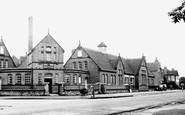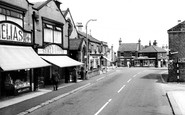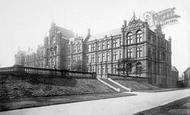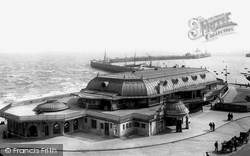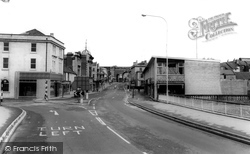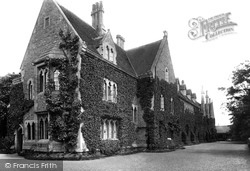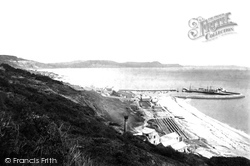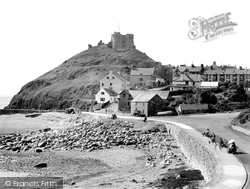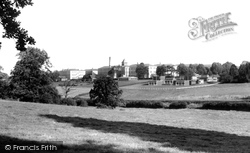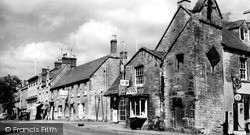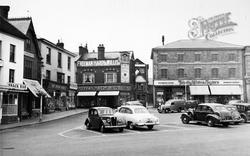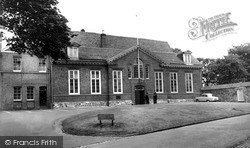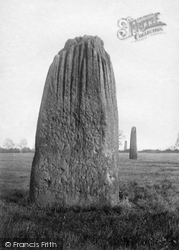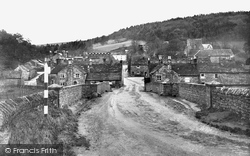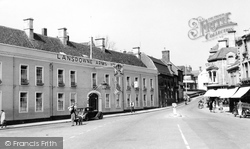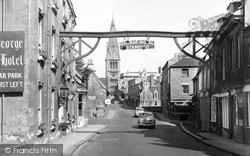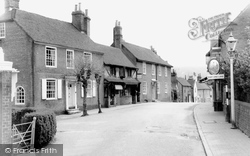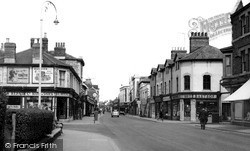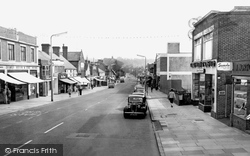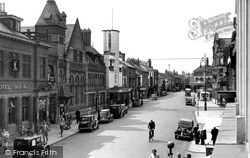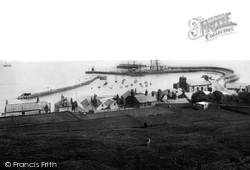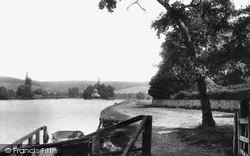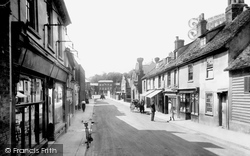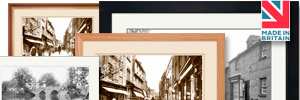Places
1 places found.
Those places high-lighted have photos. All locations may have maps, books and memories.
Photos
63 photos found. Showing results 281 to 63.
Maps
255 maps found.
Books
3 books found. Showing results 337 to 3.
Memories
625 memories found. Showing results 141 to 150.
Hilltop
My Grandad and Nan(Fred and Minnie Mellott) owned the Grocers Shop ON Hilltop next to the butchers,my Dad and Uncle were born there (Roy Mellott and Brian Mellott). I have lots of memories as a child stopping with my nan and grandad, ...Read more
A memory of Eastwood in 1960 by
Great Times Playing In The Fields.
I was born in Greenford on 1st Oct 1943 (25 Greenway Gardens) We were bombed out & were evacuated to various places. It must have been after the war we moved to 7 Laughton Rd in Northolt. We didn't live there ...Read more
A memory of Northolt in 1946 by
The Kidd's Alright
THE KIDD IS ALRIGHT The daylight had faded away and dusk was now dim enough to coax the streetlights to pop on, their vague orange light slowly getting brighter as their bulbs warmed. Meanwhile inside the Hamblett ...Read more
A memory of Moston in 1972 by
Waiting For The Bus
To the right of this picture, on the High Street was the town hall. For seven years I waited there every morning for the Jump Circular bus, or if I missed it the Rotherham bus to take me into Barnsley where I was at the then ...Read more
A memory of Hoyland in 1961 by
My Army Day,S
I was a National Service Concript , January 1947 . ( Coldest Winter for years ) . I was posted to Lydd camp with the 30th Light Ack Ack , Regiment Royal Artillery . 18yrs of age . When I saw Romney Marsh on the Postings Board . I was quite ...Read more
A memory of Lydd in 1947 by
Vague Memories Of Waterlooville
I was born at the Bransbury Nursing Home, Jubilee Road, Waterlooville, during the war in December 1943. I lived with my grandmother Eva Hill (nee Redman) and my mother, Joyce Hill (nee Lewis) at 56 Hambledon Road ...Read more
A memory of Waterlooville by
Growing Up
I was born on the 24th of July 1929 above a shop next to a pub called the Rose of Denmark, in Hotwells, Bristol, very convenient for Father to wet his whistle and my head at the same time. Father was born in 1893, Mother in 1895. They ...Read more
A memory of Bristol in 1930 by
Our Gang
I was born in Russel Place off Hankinson St. We had cockroaches all over the house and there was 8 kids & 2 adults in a 2up 2down. We had no money & my dad was a gambler & a violent man. In 1952 we were rehoused to Corby ...Read more
A memory of Salford in 1953 by
School In The 1960's
My father was in the army so we moved in to the army houses - Coronation Road, having just left Hong Kong. I started at the infant's school which was very local to our house. Then at age 7, I went to the primary school. This ...Read more
A memory of Bodelwyddan in 1962
Part 8
Entertainment The Men: Mostly the pubs provided a good range of entertainment with darts, dominoes and cards being played. Some men kept greyhounds or whippets for racing, but generally gardening took up a lot of their time, as this ...Read more
A memory of Middle Rainton in 1945 by
Captions
381 captions found. Showing results 337 to 360.
Inside, the capacious great hall, 130 feet long by 65 feet, offered a range of other entertainments and was used for plays and concerts.
The two low buildings next to Redwoods have had a wide range of uses, from nurseries to restaurants.
It was designed by Joseph Clarke in the style of an Oxford college, with three ranges around a cloister; this was enclosed by a northern arm in 1930.
The factory site became a Royal Air Force base for operating air-sea rescue craft and bombing range launches during the Second World War.
It fired a heavy, hard-hitting bolt that could penetrate armour at ranges up to 250 yds.
Hospital, to the west of Caterham and east of the tiny hill hamlet of Chaldon, was built in 1869 as the Metropolitan Asylum for London's insane; it accommodated 1,000 men and 1,200 women in its vast ranges
Man and horse wandered about on the common unable to find their way home, until eventually the curfew bell rang and its resounding tones led them home.
This photograph shows the domestic range, which is situated on the southern side of the fortress overlooking the river.
The tower and spire of St Mary's Church rises above the rich assortment of architectural styles, which range from the 15th to the 20th centuries, with several of the buildings having recently been
Although the building has been pared down from its original aisled form, and has been provided with what is basically a 17th- century range and brick front, enough original fabric remains to
They range from 18 feet to 22 feet in height (taller than most of the Stonehenge uprights) and weigh more than 20 tons each.
Thinking themselves delivered from the heathens, the brothers rang the Abbey bells in celebration.
It has an impressive front with a range of fourteen sash windows and an unbroken parapet.
The window boxes of the George Hotel are still a feature today, and the range of buildings on the right of the photograph continues to be used as shops, now antiques and furnishings, although previously
One of Whalley's famous sons was Samuel Brooks, who moved to Manchester to make his fortune - he named an area that he purchased there Whalley Range.
They range from 18 feet to 22 feet in height (taller than most of the Stonehenge uprights) and weigh more than 20 tons each.
A range of 16th-century houses and cottages descends the hill towards a central crossroads, notably Old Forge, Bowries and Ricksteddle.
Adjacent to the public house was the range of New Swindon Co-operative Society shops, comprising menswear, footwear, shoe repairs, drapery, confectionery and grocery stores.
Inside, the capacious great hall, 130 feet long by 65 feet, offered a range of other entertainments and was used for plays and concerts.
The larger premises were soon put to good use, and he was able to display a wide range of furniture that he had not only made, but had also bought in, thereby widening the choice for his increasing
Large, German hydrogen-filled airships were making bombing raids on England but Loughborough was thought to be out of range.
Its buildings range from Bay Cottage (near left), the Royal Standard, Sunnyholme, the Bonded Store, and the Coastguard Station to the old Cobb Arms (right).
Next along were a range of old cottages, which were replaced around 1900 by the Little White Hart Hotel.
The buildings facing the policeman have been demolished and replaced by a range of modern shops.
Places (1)
Photos (63)
Memories (625)
Books (3)
Maps (255)



